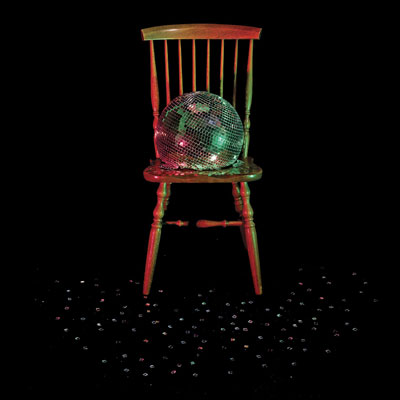One can go about how to review The Visitor by Jim O’Rourke a number of ways. A popular one it seems, is to bring up the fact that the album is named after a fictional recording from the Nicolas Roeg film The Man Who Fell To Earth. This has been done due to the fact that O’Rourke’s three other full-length releases for Drag City all share Roeg film references for titles as well. It’s not a bad place to start; since in The Man…, the progtagonist, an alien played by David Bowie, records an LP in an effort to reach out to his home planet one last time. And there is a strange feeling that one can perhaps call “alien” to The Visitor, with its 200 tracks of instruments mixed in that fashion only found on other O’Rourke productions. It’s as if O’Rourke, having lived in Japan now for over three years, is looking back at his love of “second generation Americana,” that is to say Van Dyke Parks, John Fahey, and Charles Ives, from a long way away in Tokyo.
This in turn leads to another way of looking at The Visitor. O’Rourke has been here before in a way, with his first solo album Bad Timing with its Jack Nitzche-like strings, steel-stringed acoustic guitar descended from Fahey’s American Primitivism, and orchestral swells styled after Ives and Parks. But this current recording, O’Rourke’s first album in eight years, tells a different story, both musically and in the artwork. While the CD booklet for Timing had a cartoony bearded fellow dancing away to a mirrorball, the insert for this one shows a photograph of a mirrorball sitting on a stool at a tiny Japanese bar. Then there’s the cover iteslf, a mirrorball smashed on a dining room chair, with pieces scattered around; a very different picture to the detailed painting of the mirrorball on Timing. If that wasn’t enough to show that this album is a break from the first time O’Rourke chose this creative path, it really shows in the way the single title track morphs back and forth from a rollicking piece to near silence, from colorful orchestrations to a turn into a dark, near-dissident, brooding movement before coming back again.
In the end though, it doesn’t matter what or how you think about this record. No, this is a wonderful, beautiful thing that this reviewer is more than glad to have to play on the hi-fi. There is no question that this music was made to be enjoyed whether or not you ponder the photographs, the meaning behind the title. It’s a brilliantly gorgeous piece that when played loud like the linear notes instruct, grabs hold of you and you forget that the thing is thirty-eight minutes long. And like his other Drag City albums, there are riches in the sounds waiting to be discovered by those to come back to it again and again. To this I say: welcome back, Jim. Derek Bailey (to whom it’s dedicated to) would be proud.

